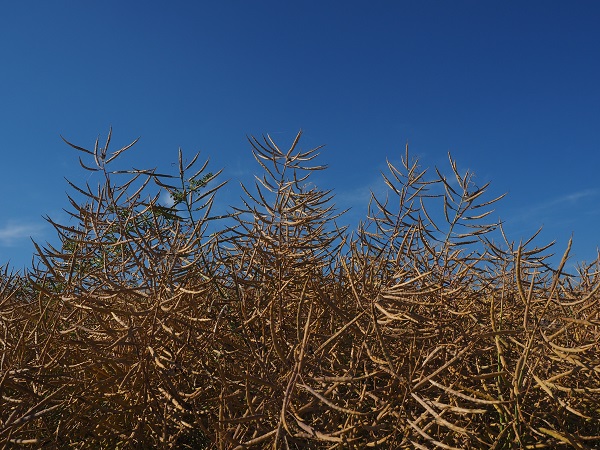Winter Oilseed Rape Update – July 2020
20 July 2020The monitored commercial crop data for SRUC’s monitored crops for early July are shown in the table below. This data is generated in commercial crops in your area so is indicative of the disease pressure and growth stages on farms at the moment.
| Winter Oilseed Rape | Average | Maximum | Minimum |
|---|---|---|---|
| Crop Growth Stage | 7.0 | 8.2 | 6.3 |
| Light leaf spot | 1 | 1 | 0 |
Harvest management
Swathing can have a place in exposed sites so long as it is not a wet field. It is also a good option near seed potato crops as it eliminates the risk of damage due to spray drift – always a concern when making pre-harvest glyphosate applications. The optimal timing for swathing is when the colour of seed is green to green-brown in the top pods, mainly red-brown in the middle pods and dark-brown in the bottom pods. AHDB trials have shown that mistimed swathing can significantly reduce oil content.
The majority of crops these days are desiccated, often with glyphosate because as well as desiccating the oilseed rape, it clears up any patches of perennial weeds giving a clean start for the next crop. As a general rule aim to apply 1080 g/ha a.i. glyphosate for desiccation and increase to 1440 g/ha if targeting perennial weeds. It is best to spray early in the day when humidity is higher, and to keep the water volume up to achieve good penetration of the canopy. Correct timing is important – trials have shown no benefit from treating before the recommended time, in fact, it can mean stems take longer to dry out and oil content is reduced. A representative sample should be taken to include side branches as well as main stems.
The earliest timing for glyphosate is when more than 66% seeds are green/brown as shown above, and all seeds below 30% moisture content. The harvest interval is 14 days, although it may be up to 3 weeks before the crop is ready to cut.
Sign up to the FAS newsletter
Receive updates on news, events and publications from Scotland’s Farm Advisory Service


